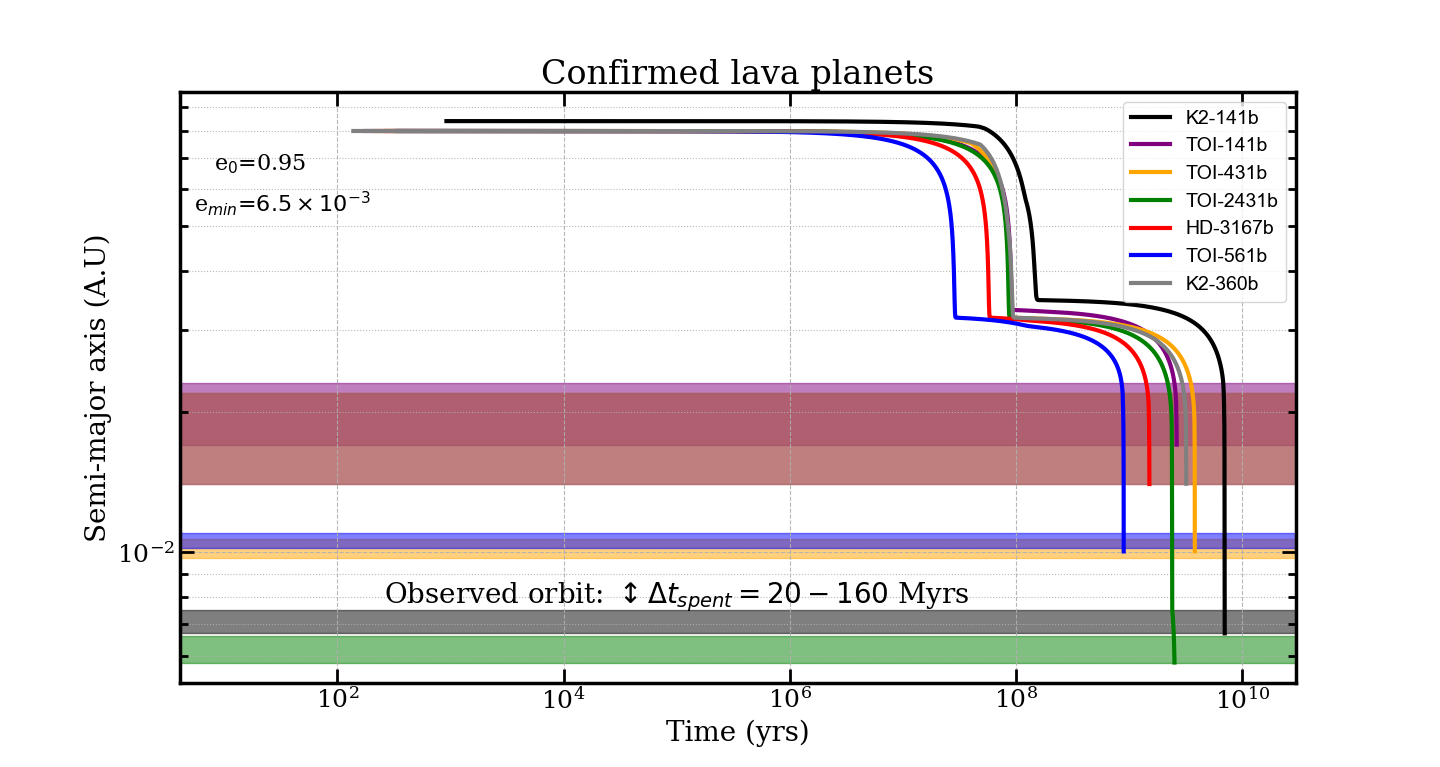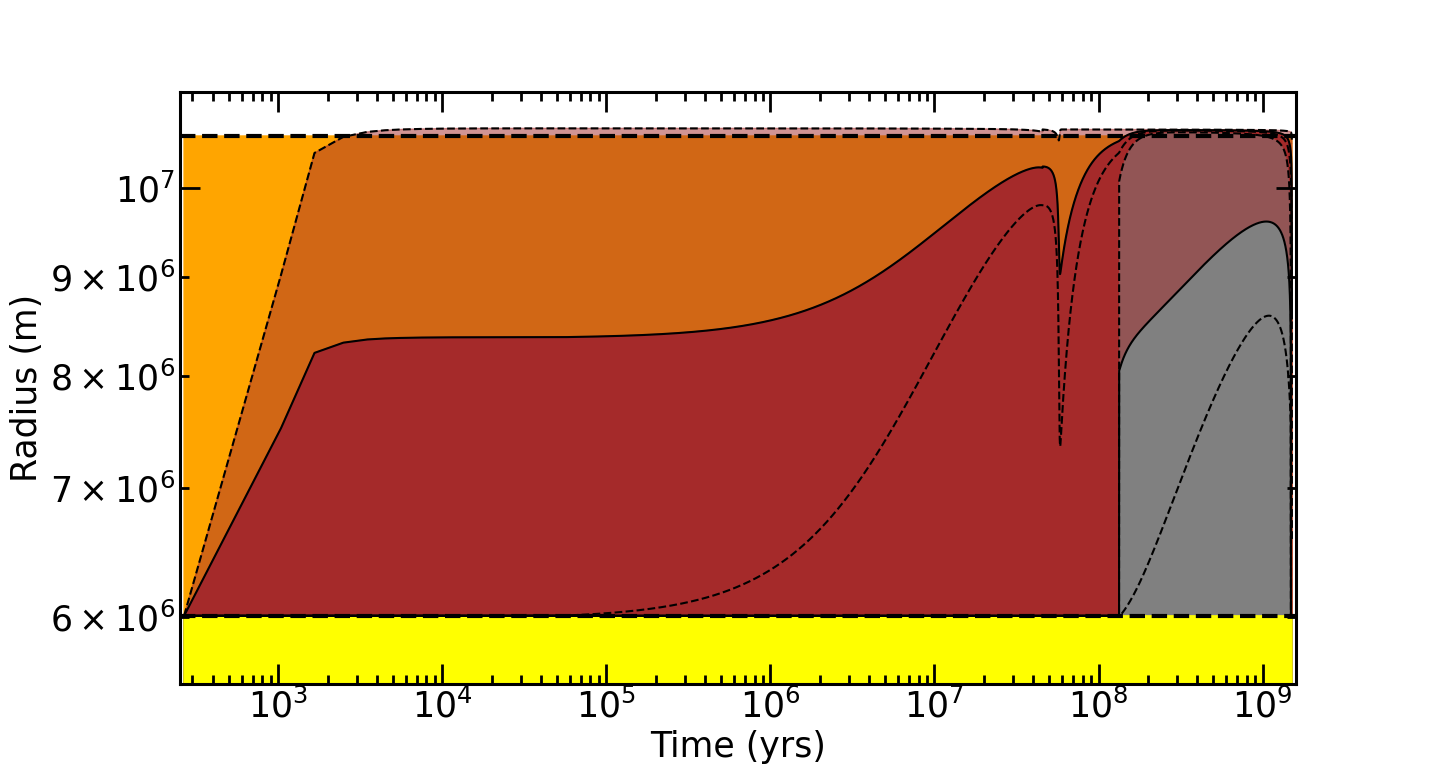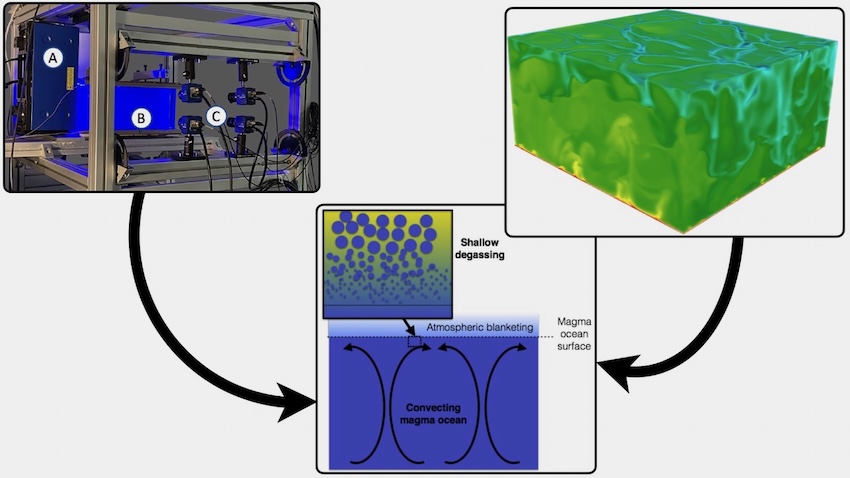EXOA13
Bridging geosciences and astronomy to interpret rocky (exo)planet observations
Convener:
Rob Spaargaren
|
Co-conveners:
Claire Marie Guimond,
Maggie Thompson,
Oliver Herbort,
Linn Boldt-Christmas,
Philipp Baumeister,
Yamila Miguel
Orals THU-OB2
|
Thu, 11 Sep, 09:30–10:30 (EEST) Room Mars (Veranda 1)
Orals THU-OB6
|
Thu, 11 Sep, 16:30–18:00 (EEST) Room Mercury (Veranda 4)
Posters THU-POS
|
Attendance Thu, 11 Sep, 18:00–19:30 (EEST) | Display Thu, 11 Sep, 08:30–19:30 Finlandia Hall foyer, F211–220
Rocky planet atmospheres and surfaces form and evolve under close interaction with their deeper interiors. Whether a planet has formed an atmosphere by volatile exchange with a magma ocean, by volcanic outgassing, or lost its atmosphere completely, understanding its observed state requires knowledge of interconnected processes operating across a wide range of spatial and temporal scales. Processes governing atmospheric evolution, and how it interacts with the interior, include volcanism, weathering, tectonics, magnetic field generation, interior and atmospheric volatile chemistry, and atmospheric loss. These processes operate on various timescales, from rapid magma-atmosphere equilibration, to the shaping of tectonics on the early Earth, to long-term climate feedbacks that sustain temperate conditions on planets like Earth. Studying these interactions - both in the Solar System and beyond - demands a fundamentally multidisciplinary understanding of rocky planets, spanning astronomy, geosciences, and planetary sciences.
This session aims to bring together scientists from astronomy, geosciences, and planetary sciences, to explore how interior-atmosphere interaction shapes rocky (exo)planet surfaces and atmospheres. We welcome contributions spanning experimental work, observational efforts, and modelling studies. By combining insights from exoplanets, which serve as a natural laboratory for rocky world diversity, and Solar System planets, which provide the detailed observations needed to build and validate models, we can develop a robust framework for interpreting observations of any rocky body. We encourage discussions that span all related fields, fostering new collaborative approaches to studying rocky planet evolution.
Session assets
09:30–09:33
Introduction
09:33–09:48
|
EPSC-DPS2025-2075
|
solicited
|
On-site presentation
09:48–10:00
|
EPSC-DPS2025-948
|
ECP
|
On-site presentation
10:00–10:12
|
EPSC-DPS2025-634
|
ECP
|
On-site presentation
10:12–10:24
|
EPSC-DPS2025-1473
|
ECP
|
On-site presentation
10:24–10:30
Discussion
16:30–16:45
|
EPSC-DPS2025-1501
|
ECP
|
On-site presentation
16:57–17:09
|
EPSC-DPS2025-448
|
Virtual presentation
17:21–17:33
|
EPSC-DPS2025-1568
|
ECP
|
On-site presentation
17:33–17:45
|
EPSC-DPS2025-1896
|
On-site presentation
17:45–17:57
|
EPSC-DPS2025-1929
|
ECP
|
On-site presentation
17:57–18:00
Discussion
F212
|
EPSC-DPS2025-1372
|
ECP
|
On-site presentation
F213
|
EPSC-DPS2025-1739
|
Virtual presentation
F214
|
EPSC-DPS2025-210
|
On-site presentation
F215
|
EPSC-DPS2025-1536
|
ECP
|
On-site presentation
F217
|
EPSC-DPS2025-465
|
ECP
|
On-site presentation
F218
|
EPSC-DPS2025-196
|
On-site presentation
F219
|
EPSC-DPS2025-747
|
ECP
|
On-site presentation
F220
|
EPSC-DPS2025-1323
|
ECP
|
Virtual presentation






